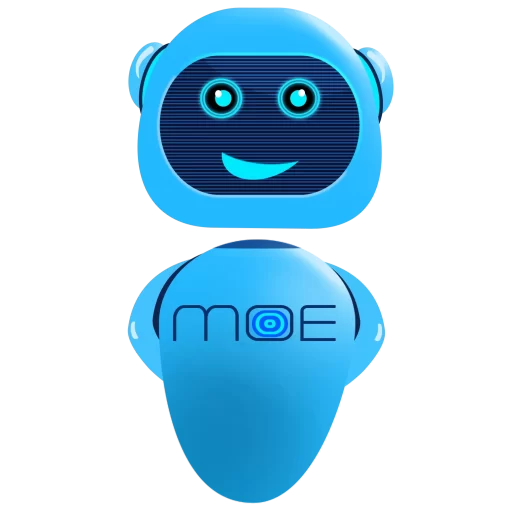The days of static customer service and automated responses. With the advent of Artificial Intelligence (AI) and Machine Learning (ML), chatbots have become smarter and more human-like. Among various techniques used in chatbot development, Deep Learning stands out as a powerful approach that enables chatbots to truly understand and engage in meaningful conversations. In this blog post, we will delve into the world of Deep Learning Chatbots, exploring their training process, self-learning capabilities, and the role of neural networks, while highlighting the potential of TensorFlow.js in implementing these intelligent conversational agents.
Basics of Deep Learning Chatbots
Deep Learning lies at the core of the innovation in chatbot technology. By leveraging deep neural networks, chatbots are able to learn from large datasets, enabling them to understand the context, sentiment, and intent of user inputs. This enhanced understanding allows for more accurate and meaningful responses, providing a significant improvement over traditional rule-based chatbots.
Self-learning chatbots take the concept of continuous improvement to the next level. These chatbots are equipped with the capability to learn from every interaction they have with users. By incorporating feedback loops and reinforcement learning techniques, chatbots can continuously refine their responses and adapt to changing user preferences, resulting in a personalized and tailored user experience.
At the heart of deep learning-based chatbots lies the neural network architecture. Neural networks mimic the structure and functionality of the human brain, consisting of interconnected layers of artificial neurons. These networks process and analyze vast amounts of training data to develop an understanding of patterns and relationships, allowing chatbots to generate coherent and contextually relevant responses.
Building a Deep Learning Chatbot from Scratch
If you’re eager to develop your own deep learning chatbot, here’s a step-by-step guide to get you started:
Gathering and preprocessing chatbot training data
The first and crucial step in training a deep learning chatbot is collecting and preparing the training dataset. This dataset must include a wide range of user conversations and examples of suitable responses. To ensure accuracy, the data must be thoroughly cleaned and preprocessed, removing any noise or irrelevant information, and transforming it into a format suitable for neural network training.
Selecting the appropriate neural network architecture
The success of a deep learning chatbot heavily depends on selecting the right neural network architecture. There are various architectures like recurrent
neural networks or transformer-based architectures such as the GPT-3 that show great promise in natural language understanding. Choose an architecture that best suits your specific requirements and training data.
Implementing the chatbot using TensorFlow.js framework
TensorFlow.js is a popular JavaScript framework for building neural networks and running machine learning models in the browser. After preprocessing the chatbot training data, TensorFlow.js can be utilized to implement the neural network architecture chosen earlier. This framework offers an extensive range of tools and resources that facilitate the development and deployment of deep learning chatbots.
By following these three key steps, you’ll be well on your way to crafting your own deep learning chatbot, capable of engaging users in natural, meaningful conversations.
The Advantages of Deep Learning Chatbots
The implementation of deep learning techniques in chatbots brings forth a multitude of advantages:
- Enhanced ability to understand and respond to natural language:
Deep learning chatbots excel at understanding complex and nuanced human language. By training on vast amounts of data, they become proficient in comprehending user queries, allowing for more accurate and contextually appropriate responses. This level of understanding enhances the overall user experience, leading to increased customer satisfaction.
- Continual learning and adaptation to user interactions:
Self-learning capabilities enable deep learning chatbots to continuously improve their responses based on user feedback. With every interaction, chatbots learn from their mistakes and successes, gradually refining their conversational skills. This adaptability results in a personalized user experience, where the chatbot becomes better aligned with individual preferences over time.
- Improved customer experiences through personalized interactions:
Deep learning techniques enable chatbots to analyze user input, extract relevant information, and deliver tailored responses. By considering user preferences, history, and context, chatbots can provide personalized recommendations and solutions, creating a highly engaging and customized experience for each individual user.
Challenges and Limitations of Deep Learning Chatbots
While deep learning chatbots provide significant advancements, they still face a few challenges and limitations:
- Ethical considerations and potential biases in chatbot responses:
Chatbots heavily rely on the data they are trained on. If the training data has bias or inaccuracies, the chatbot may amplify these biases in its responses. Developers must be mindful of the ethical implications and work towards building unbiased and fair chatbots that provide neutral and inclusive responses.
- Difficulty in training chatbots with limited domain-specific data:
Deep learning chatbots require substantial amounts of training data to achieve optimal performance. In domains with limited available data, training accurate and efficient chatbots can be challenging. Developers must explore techniques like transfer learning and data augmentation to enhance the learning capabilities of the chatbot.
- Ongoing challenges in achieving human-like conversational abilities:
Although deep learning chatbots have made significant progress, truly attaining human-level conversational abilities remains a challenge. Understanding the context, sarcasm, or ambiguous user intents can still be problematic. Continued advancements and research are necessary to bridge this gap and make chatbot interactions more indistinguishable from human conversations.
Future Prospects: Advancements in Deep Learning Chatbots
The future holds promising advancements in the field of deep learning chatbots:
- Exciting trends and emerging technologies in the field:
Advancements in natural language processing, reinforcement learning, and generative models like GPT-3 are rewriting the possibilities of deep learning chatbots. These technologies enable chatbots to grasp more nuanced cues, deliver more engaging responses, and generate human-like conversation flows.
- The potential impact of integrating other AI techniques with deep learning:
Deep learning techniques can be augmented with other AI techniques, such as computer vision and sentiment analysis. This integration has the potential to create highly intelligent chatbots capable of providing multi-modal responses, incorporating visual inputs, and understanding user emotions and sentiments.
- Predictions for the evolution of chatbots in the coming years:
In the coming years, we can anticipate chatbots becoming ubiquitous across various industries and sectors. From customer support to healthcare, chatbots will be seamlessly integrated into numerous applications, enhancing efficiency, accessibility, and user experiences. The evolution of chatbots will continue towards better language understanding, increased personalization, and improved user engagement.
Power Learning Chatbots
The captivating realm of Deep Learning Chatbots has paved the way for interactive and personalized conversations that were previously unimaginable. By leveraging the power of AI, ML, and neural networks, chatbots have imprinted their mark on numerous sectors, revolutionizing customer experiences and transforming the way we engage with technology. As advancements in this field continue to flourish, we eagerly anticipate a future where chatbots become indispensable companions, effortlessly navigating our queries and forging meaningful connections.
Deep Learning with Moe Chatbot
Moe Chatbot, powered by deep learning technology, is a remarkable AI assistant that has taken conversational bots to a whole new level. Through its sophisticated algorithms, Moe Chatbot has been trained to understand, respond and engage in natural, human-like conversations. With deep learning, Moe Chatbot continually learns and adapts its responses based on patterns and interactions, allowing it to provide accurate and relevant information to users. Its ability to comprehend context, emotions, and intentions enables Moe Chatbot to deliver personalized and tailored experiences to each user. Whether it’s answering questions, suggesting recommendations, or providing support, Moe Chatbot effortlessly handles conversations with fluidity and ease. Its deep learning capabilities ensure that Moe Chatbot is constantly improving, making it an invaluable tool for businesses looking to enhance customer interactions and improve overall user satisfaction.

